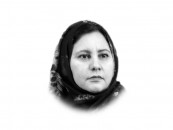The census that may reveal too much?
The last census carried out in Pakistan was in 1998

The writer is a barrister and UK solicitor who works with Aurat Foundation on law and governance issues
All essential state services should be based on empirical evidence demonstrating where these services are needed and the extent of the service to be provided. Censuses should be apolitical and should drive state policy on education, health and housing requirements. Unfortunately, this ideal is rarely achieved. In Pakistan matters that should be apolitical are invariably politicised. And by delaying the census, the present government has ensured that it continues to be a political issue.
Governments should take pride in census taking, because it provides the best snapshot of what the country looks like and helps policymakers shape its future course. It also allows reflection of past policy, of what was successful, what needs improving or refining and the allocation of money. The objective of a well thought out census should be to provide the answer in policy terms to the slogan made famous by Karl Marx’s “from each according to his ability, to each according to his needs.”
The last census carried out in Pakistan was in 1998. The census that was due to take place in 2008, is still to be carried out. Consequently, it will be almost 20 years since the last census. The Supreme Court, as it so often does, is stretching its ambit and has questioned the government on the issue of the census, asking where the census is?
In 2015, Pakistan’s population was estimated at 189.87 million people. In 1998 the population count was below 150 million, with 52.03 per cent men and 47. 97 per cent women. Internal migration and rural mobility since 1998 are very likely to reveal statistics that will alter the dynamics of current policies. For example, Karachi has the highest migration rate, at 8.8 per cent. While, in comparison, Lahore migration stands at only 5.8 per cent. The rise in Pakistan’s population since 1998, the internal migration the population shift from rural to urban areas and displaced populations due to internal conflicts will greatly change the dynamics of public policy and will influence what laws are proposed by the government. Even a basic census will likely reveal statistics that show a population growth in all four provinces, some growing more rapidly than others, and the population of men and women in the country.
It will be interesting to see, if, when the next census is conducted, the social policy created reflects the changing landscape? A more populated Sindh, will require the national government to move focus away from Punjab. More importantly, if there is change in policy to reflect the growth of the population in provinces other than Punjab, and in turn a change in resource allocation, will this change the way voters vote in the next election? If policy reflects the likely census change, it may affect the federal and Punjab government’s comfortable political majority.
Another important factor that most thorough censuses reveal, and most likely our census will show, is the dire need to work towards bridging the ever-widening gender discrimination gap. A basic census is likely to reveal the number of out of school children, including young girls, the lack of women in employment and the ever growing need of basic health facilities for a growing population of child bearing mothers.
The World Economic Forum’s Global Gender Gap report, 2016, revealed Pakistan at 143 out of 144 countries in terms of gender disparity, on economic empowerment, health, political participation and education. Social policy on health and education, to start with, not based on credible statistical facts, will stamp our failure towards the women and girls of this country.
Is the government worried that the next census is likely to reveal social change that undermines its popular base in Punjab? Too many questions will be asked on the basis of facts. Is this the reason for the reluctance?
In addition to the political and budgetary uncertainty for Punjab, it seems the government is well aware that the revelation of a census will say too much — too much poverty and the stark gender disparity, accompanied by a population rise that already weak state led facilities are near collapse.
So Pakistan still remains a country where too many families bury women who die in childbirth, helpless parents bury their young because of the lack of incubators, clean drinking water and basic health awareness, too many young girls are mothers, there is a disturbing number of girls out of school and schools exist only on paper, where minorities that are shrinking due to intolerant attitudes and fatal attacks, where a justice system is unable to cope with those seeking justice, where there is no proper housing and sanitation, too many family members out of work, too many family members missing. And the questions go on. Without any answers or any solutions.
Published in The Express Tribune, December 2nd, 2016.
Like Opinion & Editorial on Facebook, follow @ETOpEd on Twitter to receive all updates on all our daily pieces.














COMMENTS
Comments are moderated and generally will be posted if they are on-topic and not abusive.
For more information, please see our Comments FAQ